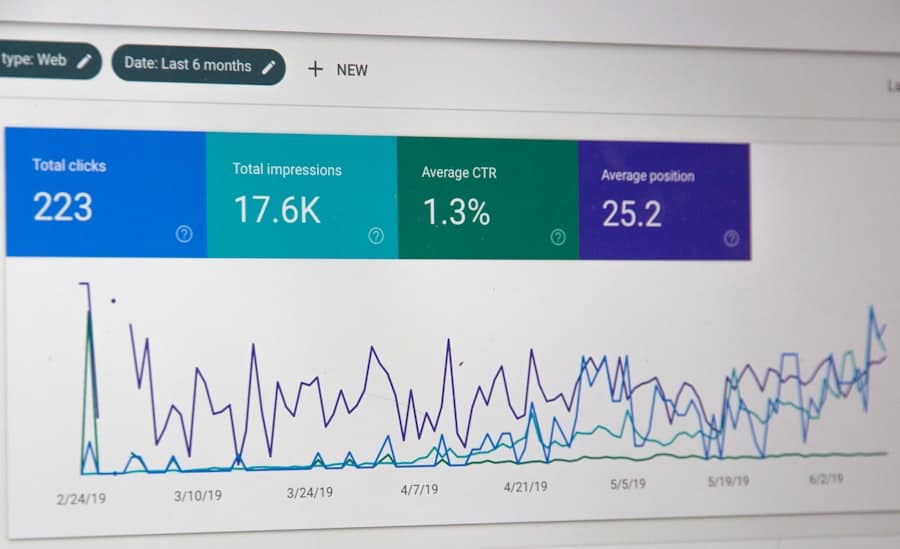Bioinformatics has emerged as a pivotal discipline in the realm of cancer research, intertwining biology, computer science, and mathematics to analyze complex biological data. The exponential growth of genomic and proteomic data has necessitated the development of sophisticated computational tools and methodologies to interpret this information effectively. Cancer, characterized by its genetic heterogeneity and complexity, presents unique challenges that bioinformatics is uniquely positioned to address.
By leveraging large datasets, bioinformatics enables researchers to uncover patterns and insights that would be nearly impossible to discern through traditional experimental approaches alone. The integration of bioinformatics into cancer research has revolutionized our understanding of tumor biology. It facilitates the analysis of vast amounts of data generated from high-throughput technologies such as next-generation sequencing (NGS), microarrays, and mass spectrometry.
These technologies produce an overwhelming volume of information regarding genetic mutations, gene expression profiles, and protein interactions. Bioinformatics serves as the bridge that connects these disparate data points, allowing for a comprehensive understanding of cancer mechanisms and the identification of potential therapeutic targets.
Key Takeaways
- Bioinformatics plays a crucial role in analyzing and interpreting genomic data for cancer research, leading to a better understanding of the disease and potential treatment options.
- Bioinformatics helps in identifying cancer biomarkers, which are essential for early detection, prognosis, and personalized treatment strategies.
- Understanding cancer pathways is made possible through bioinformatics, allowing researchers to uncover the underlying mechanisms of cancer development and progression.
- Bioinformatics is instrumental in drug discovery for cancer treatment, facilitating the identification of potential drug targets and the development of more effective therapies.
- Personalized medicine for cancer patients is greatly enhanced by bioinformatics, enabling tailored treatment plans based on individual genetic profiles and tumor characteristics.
The Use of Genomic Data in Cancer Research
Genomic data plays a crucial role in cancer research, providing insights into the genetic alterations that drive tumorigenesis. High-throughput sequencing technologies have enabled researchers to sequence entire genomes, exomes, or transcriptomes of cancer cells, revealing a wealth of information about mutations, copy number variations, and epigenetic modifications. For instance, the Cancer Genome Atlas (TCGA) project has generated extensive genomic datasets across various cancer types, facilitating the identification of recurrent mutations and novel oncogenes.
This wealth of genomic data allows researchers to classify tumors more accurately and understand their underlying biology. Moreover, the analysis of genomic data has led to the discovery of specific mutations associated with particular cancer types. For example, the identification of mutations in the KRAS gene has been linked to pancreatic cancer, while alterations in the TP53 gene are frequently observed in a wide range of malignancies.
By correlating genomic alterations with clinical outcomes, bioinformatics tools can help stratify patients based on their genetic profiles, paving the way for more targeted therapeutic approaches. The ability to analyze genomic data not only enhances our understanding of cancer but also informs clinical decision-making and treatment strategies.
The Role of Bioinformatics in Identifying Cancer Biomarkers

The identification of cancer biomarkers is one of the most significant contributions of bioinformatics to cancer research. Biomarkers are biological molecules that indicate the presence or progression of a disease and can be used for diagnosis, prognosis, or treatment response prediction. Bioinformatics tools facilitate the mining of large-scale genomic and proteomic datasets to identify potential biomarkers associated with specific cancer types.
For instance, machine learning algorithms can analyze gene expression profiles to distinguish between cancerous and non-cancerous tissues, leading to the discovery of novel biomarkers. One notable example is the use of bioinformatics in identifying circulating tumor DNA (ctDNA) as a biomarker for various cancers. By analyzing blood samples from patients, researchers can detect fragments of DNA shed by tumors into the bloodstream.
Bioinformatics algorithms can process this data to identify specific mutations or alterations that correlate with disease progression or treatment response. This non-invasive approach not only enhances early detection but also allows for real-time monitoring of treatment efficacy, demonstrating the transformative potential of bioinformatics in biomarker discovery.
How Bioinformatics Helps in Understanding Cancer Pathways
Understanding the intricate signaling pathways involved in cancer development is essential for developing effective therapeutic strategies. Bioinformatics plays a critical role in elucidating these pathways by integrating various types of biological data, including genomic, transcriptomic, and proteomic information. Pathway analysis tools enable researchers to visualize complex interactions between genes and proteins, providing insights into how alterations in these pathways contribute to tumorigenesis.
For example, bioinformatics approaches have been employed to study the PI3K-AKT-mTOR signaling pathway, which is frequently dysregulated in many cancers. By analyzing gene expression data from tumor samples, researchers can identify key components of this pathway that are overexpressed or mutated. This information can guide the development of targeted therapies aimed at inhibiting specific nodes within the pathway.
Additionally, network analysis tools allow researchers to explore how different pathways interact with one another, revealing potential crosstalk that may influence cancer progression and treatment response.
The Impact of Bioinformatics in Drug Discovery for Cancer Treatment
The drug discovery process has been significantly enhanced by bioinformatics, which streamlines the identification and validation of new therapeutic targets. By analyzing genomic and proteomic data from cancer cells, researchers can identify vulnerabilities that can be exploited for therapeutic intervention. For instance, bioinformatics tools can predict how specific mutations may affect drug response, allowing for the design of drugs that specifically target mutant proteins.
One prominent example is the development of targeted therapies for breast cancer patients with HER2-positive tumors. Bioinformatics analyses have identified HER2 as a critical driver of tumor growth in this subset of patients. Consequently, drugs such as trastuzumab (Herceptin) have been developed to specifically target HER2 receptors, leading to improved patient outcomes.
Furthermore, bioinformatics aids in repurposing existing drugs by identifying new indications based on molecular profiles, thereby accelerating the drug discovery process and reducing costs.
Bioinformatics in Personalized Medicine for Cancer Patients

Personalized medicine represents a paradigm shift in cancer treatment, where therapies are tailored to individual patients based on their unique genetic makeup. Bioinformatics is at the forefront of this movement, enabling clinicians to analyze a patient’s genomic data and select treatments that are most likely to be effective. By integrating genomic information with clinical data, bioinformatics tools can help identify specific mutations or alterations that may predict response to particular therapies.
For instance, patients with non-small cell lung cancer (NSCLC) harboring mutations in the EGFR gene may benefit from targeted therapies such as gefitinib or erlotinib. Bioinformatics platforms can analyze tumor samples to determine EGFR mutation status quickly and accurately, guiding treatment decisions. Additionally, bioinformatics facilitates the identification of potential resistance mechanisms that may arise during treatment, allowing for timely adjustments to therapy based on real-time monitoring of tumor evolution.
Challenges and Limitations of Bioinformatics in Cancer Research
Despite its transformative potential, bioinformatics faces several challenges and limitations in cancer research. One significant hurdle is the integration of diverse datasets from various sources, which often differ in quality and format. The lack of standardized protocols for data collection and analysis can lead to inconsistencies that complicate interpretation and comparison across studies.
Furthermore, the sheer volume of data generated by high-throughput technologies poses storage and computational challenges that require robust infrastructure and advanced analytical tools. Another limitation is the complexity of biological systems themselves. Cancer is not a single disease but rather a collection of heterogeneous conditions influenced by genetic, epigenetic, and environmental factors.
Additionally, while bioinformatics can identify potential biomarkers or therapeutic targets, translating these findings into clinical practice remains a significant challenge due to regulatory hurdles and the need for extensive validation studies.
Future Directions and Opportunities for Bioinformatics in Cancer Research
The future of bioinformatics in cancer research is promising, with numerous opportunities for innovation and advancement. As technology continues to evolve, we can expect improvements in data generation techniques that will yield even more comprehensive datasets. The advent of single-cell sequencing technologies allows researchers to explore tumor heterogeneity at an unprecedented resolution, providing insights into cellular interactions within the tumor microenvironment.
Moreover, advancements in artificial intelligence (AI) and machine learning are poised to revolutionize bioinformatics analyses further. These technologies can enhance predictive modeling capabilities by identifying complex patterns within large datasets that may not be apparent through traditional statistical methods. As AI algorithms become more sophisticated, they will likely play an increasingly central role in personalized medicine by predicting patient responses to therapies based on their unique molecular profiles.
In conclusion, bioinformatics stands as a cornerstone in modern cancer research, driving discoveries that enhance our understanding of tumor biology and inform clinical practice. As we continue to harness the power of computational tools and integrate diverse datasets, we move closer to realizing the full potential of personalized medicine in oncology.
A related article to The Role of Bioinformatics in Accelerating Cancer Research is “Top 10 Best Astrology Software for PC and Mac 2023: Reviews and Recommendations.” This article discusses the various astrology software options available for both PC and Mac users, providing insights into their features and functionalities. By utilizing advanced software tools like bioinformatics and astrology software, researchers can enhance their data analysis capabilities and accelerate their research efforts in understanding complex diseases like cancer. To learn more about the top astrology software options, you can check out the article here.
FAQs
What is bioinformatics?
Bioinformatics is the field of science that combines biology, computer science, and information technology to analyze and interpret biological data. It involves the use of computational tools and techniques to understand biological processes, particularly at the molecular level.
How does bioinformatics accelerate cancer research?
Bioinformatics plays a crucial role in cancer research by analyzing large-scale genomic and proteomic data to identify genetic mutations, biomarkers, and potential drug targets. It helps researchers to understand the underlying mechanisms of cancer development, progression, and treatment response.
What are the key applications of bioinformatics in cancer research?
Bioinformatics is used in cancer research for various applications, including genomic sequencing, gene expression analysis, protein structure prediction, pathway analysis, drug discovery, and personalized medicine. It enables researchers to integrate and analyze complex biological data to gain insights into cancer biology.
How does bioinformatics contribute to personalized medicine in cancer treatment?
Bioinformatics allows for the analysis of individual patient’s genetic and molecular profiles to tailor treatment strategies based on the specific characteristics of their cancer. This personalized approach can lead to more effective and targeted therapies, ultimately improving patient outcomes.
What are some of the challenges in bioinformatics for cancer research?
Challenges in bioinformatics for cancer research include the need for advanced computational tools and algorithms, data integration and standardization, interpretation of complex biological data, and ensuring data privacy and security. Additionally, the rapid pace of technological advancements requires continuous adaptation and innovation in bioinformatics approaches.

